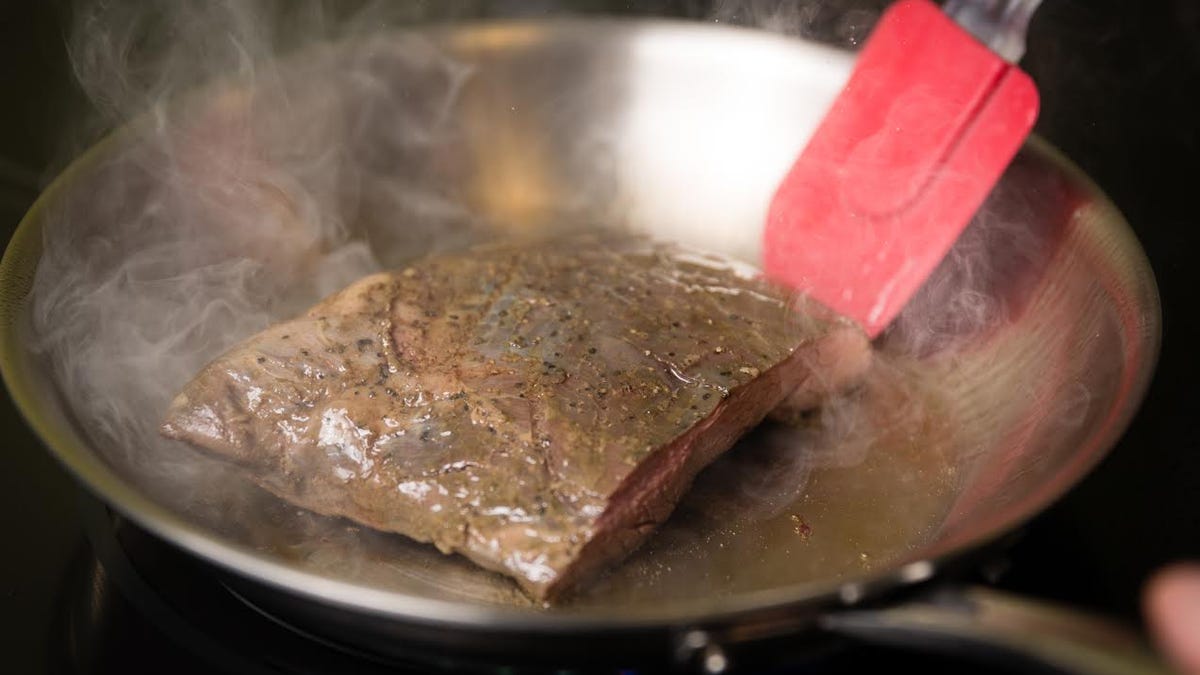How to buy the best skillet
From cast iron to stainless steel, here's how to pick a new skillet or pan you'll love.
Is your dependable frying pan is beyond repair? Or perhaps you'd like to buy your first new skillet. In any case, the options out there are daunting (some are even Star Wars-themed). Stores are filled with everything from stainless steel, cast iron, carbon steel, plus multiple kinds of nonstick pans.
Each has its own pros and cons, so how do you know which to get for what you want to cook? Don't fret. This guide will tell you everything you need to know.
Nonstick skillets handle eggs particularly well.
Nonstick still has appeal
Nonstick cookware is designed to do exactly what it sounds like. The interior coatings of these pans are purposely made as frictionless as possible. Foods that cling and make a mess in other pans -- like omelets -- glide effortlessly off this cookware finish. Use them to saute, brown and stir-fry everything from veggies and meat to poultry and fish.
Another pro is that you don't need to use much oil or butter to stop food from sticking to the pan while cooking. Cleanup is a breeze too, since there's no stuck-on junk to deal with.
There's a trade-off for this convenience, though. Nonstick cooking surfaces are less durable than other interior pan finishes. Also, using metal utensils in them is a no-no, because they will scratch (and ruin) the coating.
You shouldn't put nonstick cookware in the oven, under broilers, or even over stove burners on high heat. High levels of heat (above 500 degrees F, or 260 degrees C) will cause their plastic polymer coatings to deteriorate or break down completely. That in turn releases fumes shown to be toxic if inhaled.
Read more: This is the right way to store your pots and pans.
Ceramic, the other nonstick
Ceramic-lined pans have become popular in recent years since they're synthetic-free. Widely available ceramic cookware brands include GreenPan and Green Earth.
Made from natural, inorganic material similar to sand or clay, ceramic finishes won't chemically break down when hit with extreme heat (above 500F). They won't release hazardous fumes under these conditions either.
Ceramic skillets won't satisfy everyone, though. Their nonstick properties fade over time. It also wears out faster than traditional nonstick coatings. Don't choose a pan with a ceramic finish if you expect it to last generations.
Stainless steel cookware is the workhorse of many home kitchens
Practical, capable stainless steel
Stainless steel pans are another type of cookware you'll see on plenty of store shelves. This finish is the perfect choice it you want all-purpose, high-performance, cookware with the least amount of hassle. Stainless steel pots and pans sit in the Goldilocks zone between durability, versatility and price.
They can take high heat, whether that's on the stove, in the oven or under a broiler. And as long as you don't mistreat them, they'll provide years of everyday service. You don't have to season them like cast-iron and carbon-steel pans. And their insides can handle all kinds of utensils (sharp, hard, metal or otherwise).
However, stainless steel cookware isn't indestructible. Harsh cleaning solutions, abrasive materials and excessive trips through the dishwasher will harm them. Their exterior is especially vulnerable. If you're not careful they will lose their luster and shine and become scratched.
Excellent heat retention help cast-iron pans to create a thick seared crust on meat .
Cast iron for a lovely sear
Big, heavy and at times high-maintenance, cast-iron cookware may not seem worth the trouble. Once you get the hang of them though, you just might become a convert.
Thanks to high density, cast-iron pans retain heat remarkably well. And their relative thickness evenly distributes that heat to food they cook. So if you hanker for restaurant-quality seared steaks and chops, deliciously crisp crusts and all, pick up a cast-iron skillet.
You'll need to season cast-iron pans though, before you use them. There are two main purposes for seasoning cast iron. The first is to form a smooth, almost nonstick surface inside your skillet. The second is to protect the pan from rust caused by humidity or direct contact with water. The process isn't hard, but does take some effort and time.
You have to reseason them from time to time as well -- especially if they get gunked up by burnt grease and old food bits. These deposits will diminish the nonstick properties of seasoned cast iron over time.
Carbon Steel cookware like this Matfer Bourgeat Carbon Steel pan are what professional cooks prefer.
Chefs choose carbon steel
Want to really cook like a chef? Then use what the pros use: carbon-steel cookware. Carbon steel, aka black steel, is much lighter than cast iron. Despite being less dense, carbon-steel pans and skillets retain heat almost as well as their cast-iron cousins. That means they sear food just as well.
Carbon steel tends to be smoother than cast iron too. The big upside: these pans have cooking surfaces potentially just as slippery as nonstick skillets. Eggs, omelettes, prime cuts of meat, poultry, seafood -- quality carbon-steel pans can do it all.
Like cast iron though, you will need to season them. It'll guard the cookware from rust as well as create a frictionless interior. All this make carbon-steel skillets superb multipurpose kitchen tools. If you're an experienced home cook and would like to up your game, give a carbon-steel pan a whirl.


